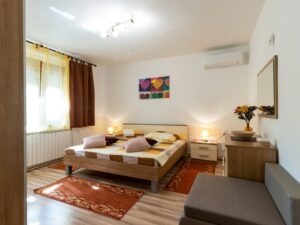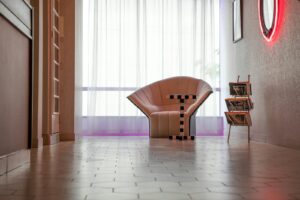Wool carpet is a natural, luxurious option prized for its softness, insulation, and long-term durability, while polypropylene carpet is a synthetic, moisture-resistant, and budget-friendly alternative that’s ideal for high-spill or outdoor-prone spaces. Wool suits dry, comfortable indoor settings, while polypropylene is better for damp, high-use, or low-maintenance environments.
If you’ve ever wondered which is better—wool or polypropylene carpet—you’re not alone. I’ve had dozens of clients in San Diego ask me the same thing, and honestly, it all depends on where the carpet’s going and what kind of life you live. I like to say that wool and polypropylene are like different tools in a toolbox. Each has its place, and neither is better across the board. What matters is using the right one for the job.
Understanding Wool Carpet and Why People Love It
Wool is a natural fiber, and you can feel the difference the moment you step on it. It’s warm, cushy, and gives off an upscale vibe that synthetic carpets can’t quite match. I’ve installed wool in master bedrooms, formal sitting rooms, and high-end offices where comfort and appearance matter most. Wool is naturally elastic, which means it resists crushing and matting over time. It also acts as a great insulator, helping to keep rooms quieter and warmer. Another thing my eco-conscious clients appreciate is that wool is biodegradable and renewable—it’s a green choice for those looking to reduce synthetic materials in their homes.
That said, wool isn’t without its drawbacks. It doesn’t take well to moisture, and in humid climates or below-grade rooms like basements, it can absorb water and eventually develop mildew. Wool is also more prone to staining unless it’s been specially treated, and its higher price tag often causes clients to raise an eyebrow. So while it’s a great investment in comfort and longevity, it does need a little more care and a bigger upfront budget.
What Makes Polypropylene Carpet a Practical Option
Polypropylene, often referred to as olefin, is a synthetic carpet fiber that’s made to stand up to rough-and-tumble environments. It’s incredibly resistant to moisture, mold, and mildew, which makes it ideal for areas like basements, garages, or even outdoor settings. I’ve recommended polypropylene more times than I can count for families with kids, pet owners, or landlords who need something cost-effective and easy to clean. It doesn’t absorb liquid the way wool does, so spills tend to sit on top of the fibers rather than soaking in. That makes cleanup a breeze and helps avoid long-term stains.
However, what polypropylene offers in practicality, it lacks in plushness. It doesn’t feel as soft underfoot as wool and tends to look a bit more utilitarian. Over time, it can also flatten and mat down, especially in high-traffic areas. Unlike wool, which bounces back, polypropylene often shows wear more quickly. It’s also made from petroleum-based materials, so it’s not the most sustainable option out there. But if you’re working with a limited budget or need a no-fuss floor that can handle moisture and mess, polypropylene gets the job done.
Comparing How Each Carpet Performs in Real Life
When I’m helping clients choose between wool and polypropylene, I always steer the conversation toward lifestyle. Wool is the right choice for homeowners who want comfort, elegance, and longevity in spaces like bedrooms, dens, or formal living rooms. It shines in dry environments and homes where routine cleaning and stain prevention aren’t a hassle. Polypropylene, on the other hand, is better suited to high-risk or high-use areas—think playrooms, rental properties, or mudrooms. It’s the kind of carpet you choose when you need something you won’t lose sleep over if it gets wet, dirty, or sun-faded.
Wool vs Polypropylene: My Quick Breakdown
| Feature | Wool | Polypropylene (Olefin) |
|---|---|---|
| Type | Natural | Synthetic |
| Feel | Soft and luxurious | Coarse, less plush |
| Durability | Excellent (if maintained) | Moderate |
| Stain Resistance | Fair (better with treatment) | High |
| Moisture Resistance | Low | Excellent |
| Price | High | Budget-friendly |
| Eco-Friendliness | High | Low |
| Best Use | Bedrooms, living rooms | Basements, rentals, outdoor areas |
Final Thoughts from a Flooring Pro
At the end of the day, there’s no one-size-fits-all winner in the wool vs. polypropylene debate. Wool brings timeless comfort, natural beauty, and durability if you’re willing to maintain it. Polypropylene is the practical pick for moisture-prone, messy, or budget-conscious spaces. I always tell homeowners to think about how the space will be used and how much effort they’re willing to put into upkeep. If you want something soft and stylish that lasts for decades, wool is worth the investment. But if you’re just looking for something tough and low-maintenance that’ll hold up to daily life without costing a fortune, polypropylene is the way to go.
Still not sure which one to choose? That’s where I come in. I’m always happy to walk through the options and help you find the best fit for your home and your lifestyle—without pulling the rug out from under your budget.





